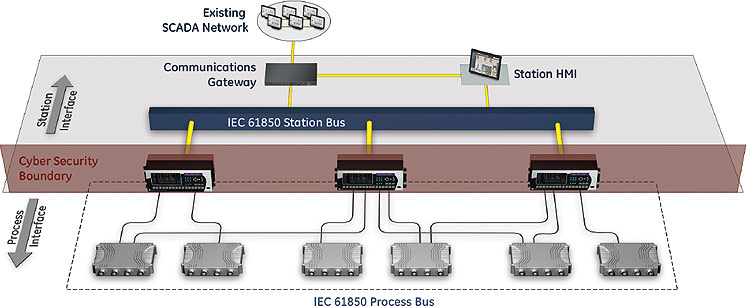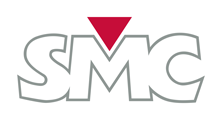Transforming Electrical Protection: Understanding IEC 61850 and Its Role in Modern Relay Testing
The world of electrical relay testing is evolving rapidly, driven by the adoption of innovative standards like IEC 61850. This international protocol is revolutionizing substation automation systems (SAS) and bringing unprecedented capabilities to secondary injection test sets, three-phase relay test sets, and single-phase relay test sets. By integrating IEC 61850-enabled devices, engineers can streamline testing processes, improve system reliability, and adapt to the dynamic demands of modern energy systems.
What is IEC 61850?
IEC 61850 is a global standard developed to enhance communication and interoperability within substations. It standardizes data models and communication protocols, enabling seamless interaction between Intelligent Electronic Devices (IEDs), regardless of manufacturer. This has made it indispensable for protective relay testing, whether conducted using a portable relay test set, digital relay testing equipment, or advanced relay test units.
Adopted widely in medium- and high-voltage substations, IEC 61850 is also making strides in renewable energy projects like wind and solar farms, where robust protection and automation systems are essential.
The Evolution of IEC 61850
First introduced in 2003, IEC 61850 replaced traditional, hardwired control systems with Ethernet-based digital communication. This shift allowed for faster, more flexible protection and control mechanisms, laying the groundwork for intelligent substations.
Over the years, updates to the protocol have addressed emerging challenges, particularly in cybersecurity and interoperability. These advancements are vital for applications ranging from electrical relay testing to automated grid management.

Applications in Relay Testing
The capabilities of IEC 61850 align seamlessly with modern relay testing equipment, including three-phase relay test sets, single-phase relay test sets, and fully automated solutions. The protocol enables engineers to test relays more effectively using features like GOOSE messaging, MMS, and Reports, facilitating real-time data exchange and event logging.
Key testing applications include:
- Automated Relay Testing: Automating relay tests ensures consistency, precision, and efficiency, whether using a secondary injection test set or a digital relay test unit.
- IEC 61850 Interoperability Tests: Ensuring that relays and other IEDs communicate seamlessly within the substation network.
- Functional Testing of Protection Schemes: Simulating fault conditions to verify the accuracy of overcurrent, differential, and distance protection schemes.
- Network Performance Analysis: Assessing latency and data packet integrity to confirm robust communication across substation networks.
Benefits of IEC 61850 in Relay Testing
The integration of IEC 61850 with modern relay testing equipment has transformed how utilities and engineers approach protective relay testing:
- Interoperability: Unified data models eliminate compatibility issues, allowing for flexible deployment of relay test sets across diverse systems.
- Real-Time Communication: Ethernet-based messaging ensures swift relay responses during fault events, improving system reliability.
- Cost and Time Efficiency: Digital communication reduces the need for extensive wiring, streamlining setup and maintenance processes.
- Scalability: IEC 61850 supports modular expansions, enabling utilities to adapt their testing setups as networks grow.
Challenges to Address
While IEC 61850 offers numerous advantages, certain challenges must be managed for optimal deployment in relay testing equipment:
- Cybersecurity Risks: The digital nature of IEC 61850 makes it susceptible to cyberattacks. Regular vulnerability assessments and robust protection measures are crucial.
- Complexity of Integration: Setting up IEC 61850-based systems requires specialized knowledge, making training and expertise a priority.
- Dependence on Network Performance: Reliable testing depends on stable network connections, underscoring the need for robust Ethernet setups.
Future of Relay Testing with IEC 61850
The future of protective relay testing is undoubtedly digital. As utilities worldwide adopt IEC 61850, advancements in secondary injection test sets, portable relay test sets, and automated relay testing equipment are set to redefine industry standards. Additionally, the growing integration of renewable energy sources and the emphasis on grid modernization further solidify the importance of this protocol.
By embracing IEC 61850, engineers and utilities can ensure reliable, scalable, and efficient relay testing solutions, paving the way for intelligent, resilient power systems.
Conclusion
The impact of IEC 61850 on electrical relay testing cannot be overstated. From enhancing interoperability to supporting real-time communication, the protocol is transforming how relays are tested and deployed. With the right combination of relay testing equipment—from single-phase relay test sets to three-phase relay test sets—and adherence to IEC 61850, utilities can meet the demands of modern energy systems efficiently and effectively.
For more on how our cutting-edge solutions support IEC 61850-based testing, visit our website or contact us to schedule a demonstration of our innovative relay test units and testing equipment.
